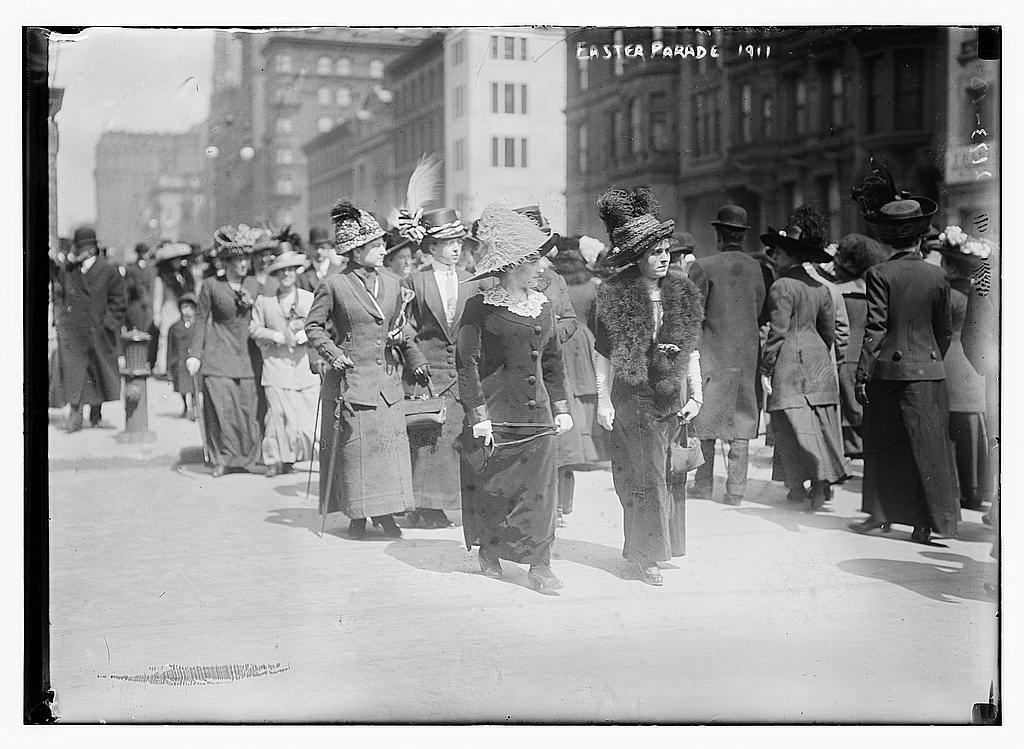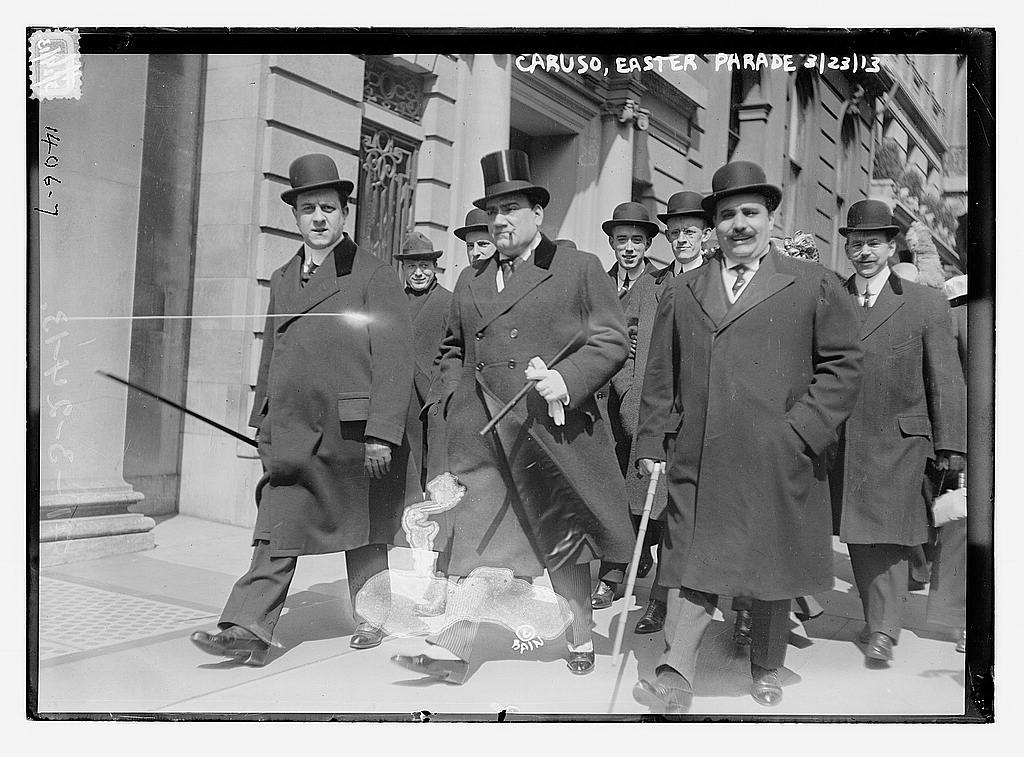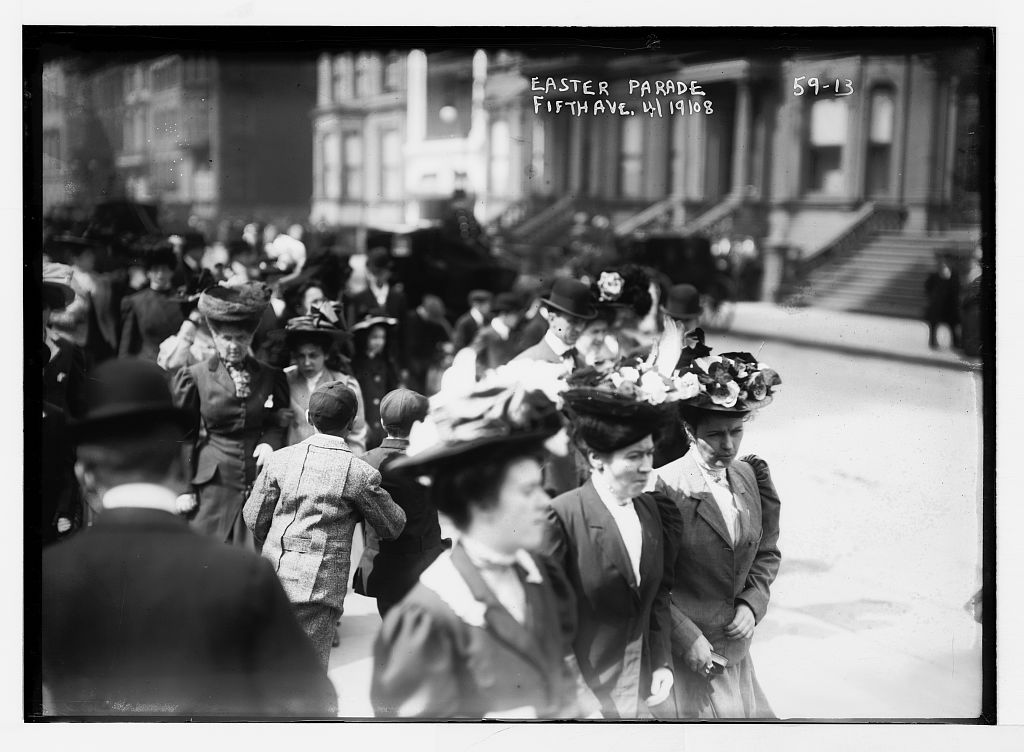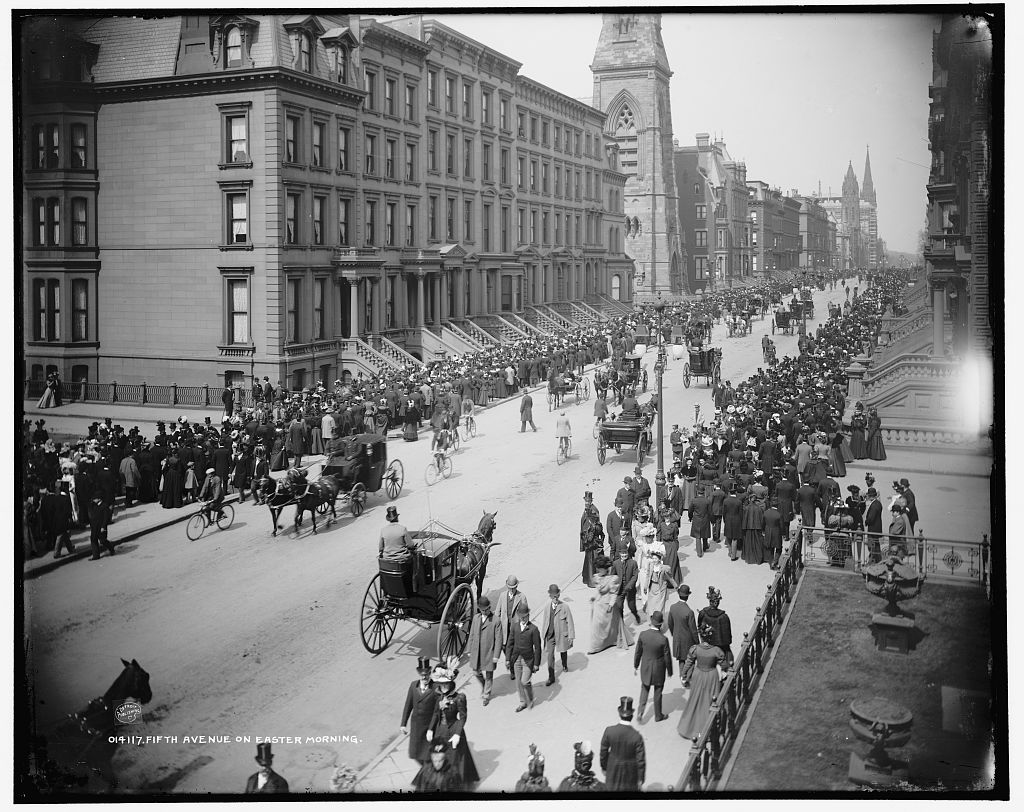For almost 150 years, budding fashionistas have been prancing up and down Fifth Avenue on Easter Sunday, displaying elaborate bonnets, hairdos and colorful outfits.
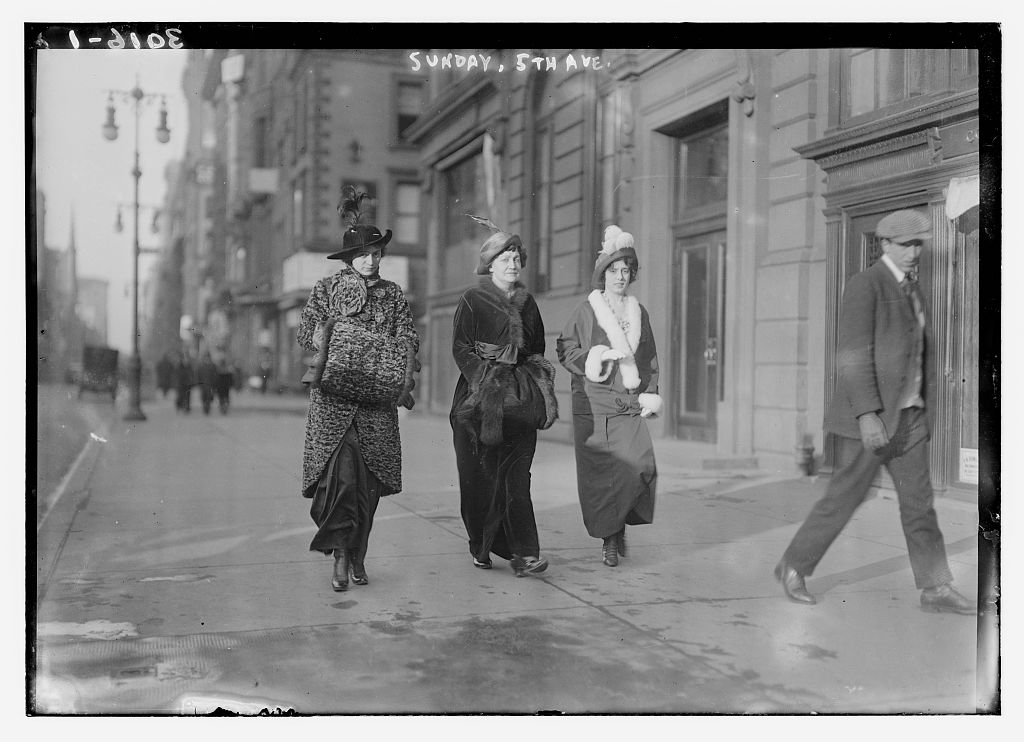
Given that modern holiday celebrations are often relatively new (for instance, trick-or-treating has only been a common activity on Halloween since the 1950s), this decorative practice located at this particular spot in Manhattan enjoys a commendable longevity.
In fact, this indulgent fashion parade is far older than most of the buildings in midtown. After all, people have been dressing up and going to church — and doing so with vanity — since the city was born.
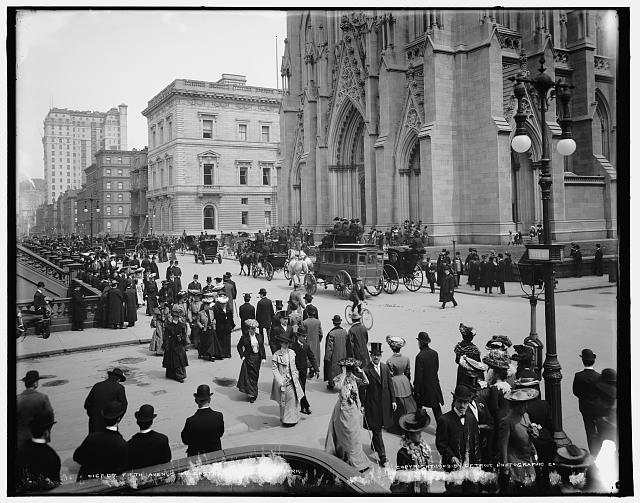
Old Fashioned Trends
According to this 1905 article in Harper’s Weekly, the display of Easter finery may have begun as early as the Dutch days along the streets of the most fashionable churches. When the British came along, that tradition continued along Broadway around Trinity Church in lower Manhattan.
By the time St. Patrick’s Cathedral was finally opened in 1879, the wealthiest New Yorkers were already on Fifth Avenue in their lavish townhouses. The cavalcade naturally migrated here, whether the costumed were congregants there or not.
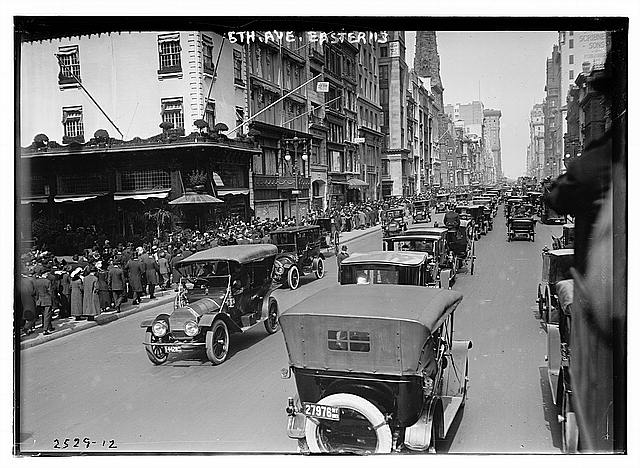
With the addition of Saint Thomas Church on 53rd Street (built in 1914), Fifth Avenue became even further inundated with Easter elegance.
Flocking in fashion
Even by 1905, the Easter bonnet parade had become an overwhelmingly popular and even cumbersome affair, equatable to weekday rush hour:
“Such a vast number of people come on Easter to see the Fifth Avenue churchgoers walk home from the church that the Avenue, in the Fifties, begins at noon to feel like Park Row at 5 o’clock, when the Brooklynites begin to feel for the Brooklyn entrance.”
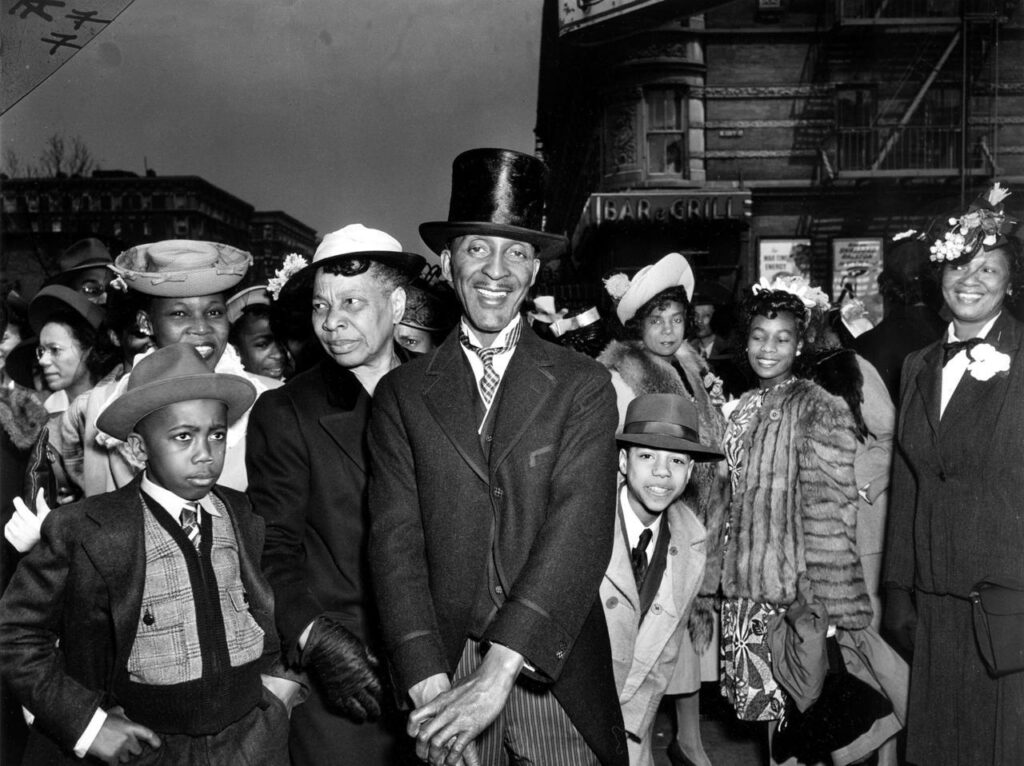
Parading Influence
The annual Fifth Avenue hat show existed before Saks Fifth Avenue department store, before Rockefeller Center, before any tony Fifth Avenue shops. The affair even influenced fashion for the rest of the year.
According to author Nathan Silver, designers and illustrators would flock to the bonnet show for inspiration. “Sketches were copied by garment makers on the Lower East Side and photos were circulated to newspapers all over the country.”
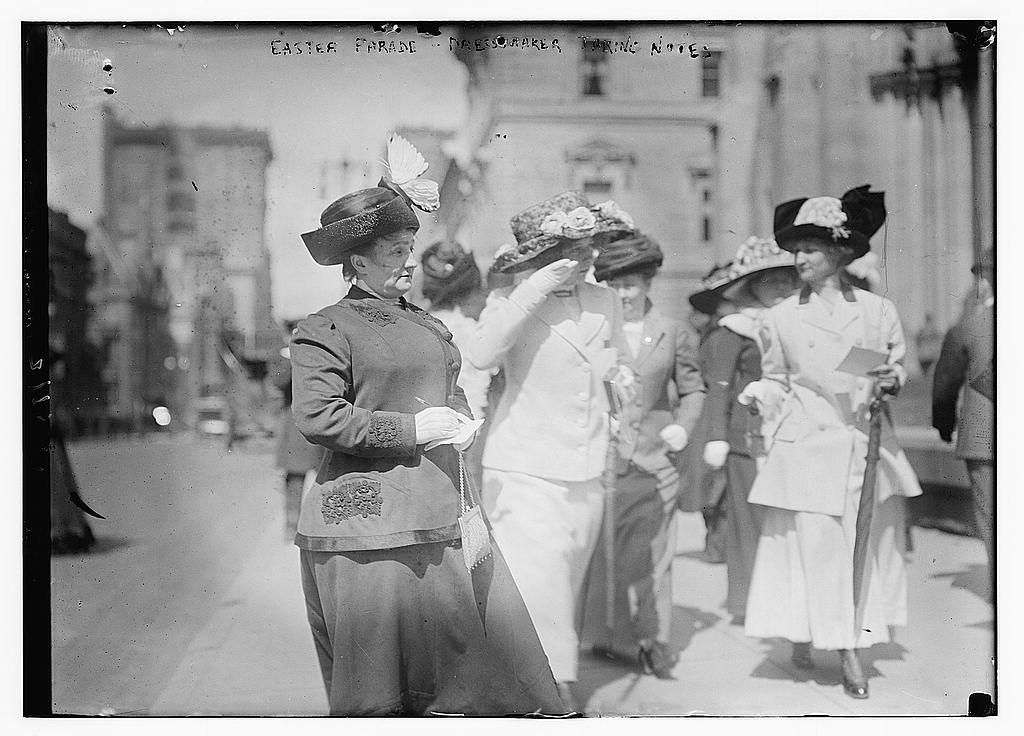
Even when the mansion of Fifth Avenue were replaced with luxury retail and department stores, budding peacocks and fashionistas continued to grace the avenue’s houses of worship.
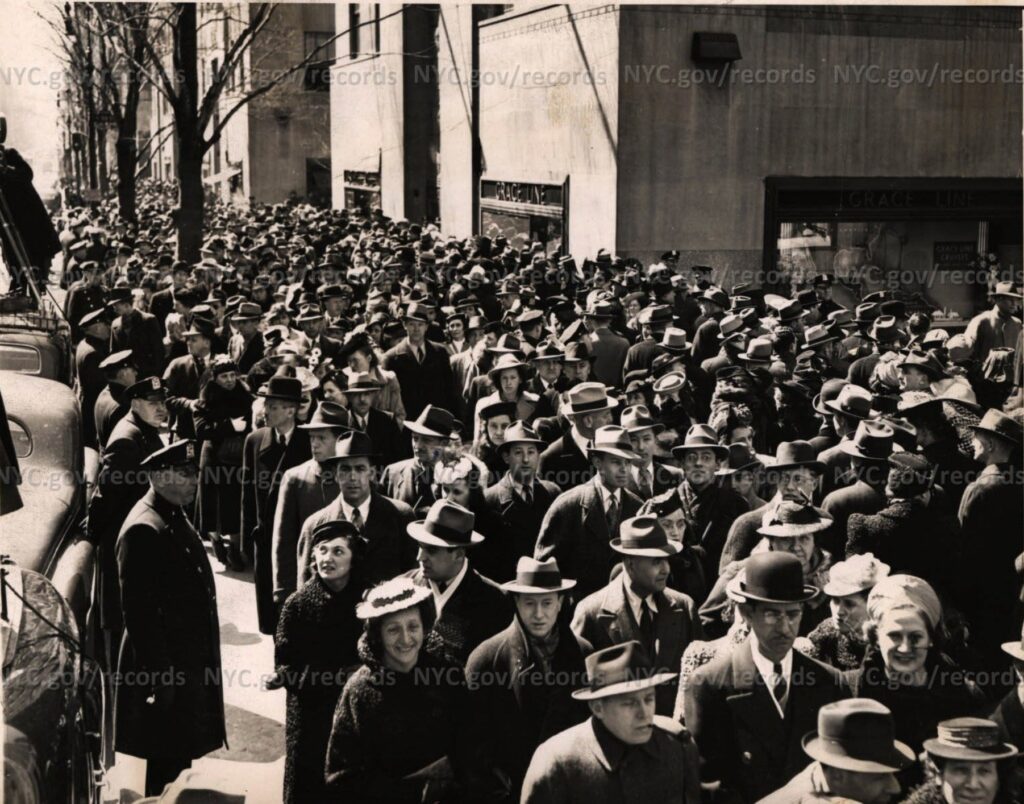
The Sunday procession was such an ingrained tradition that it’s referenced in one of Irving Berlin’s most famous songs — “Easter Parade” — when later became a colorful Hollywood musical of the same name.
Parading During a Pandemic
This year’s Easter Parade will be online only — but you can win a prize (if you post yourself in a fabulous frock on Instagram and use hashtag #EasteronFifth). Follow @fifthavenue there and visit their website for more information.
OR just sit back in your commons clothes and enjoy these images of Easter Parades gone by, courtesy the Bain Collection/Library of Congress:
